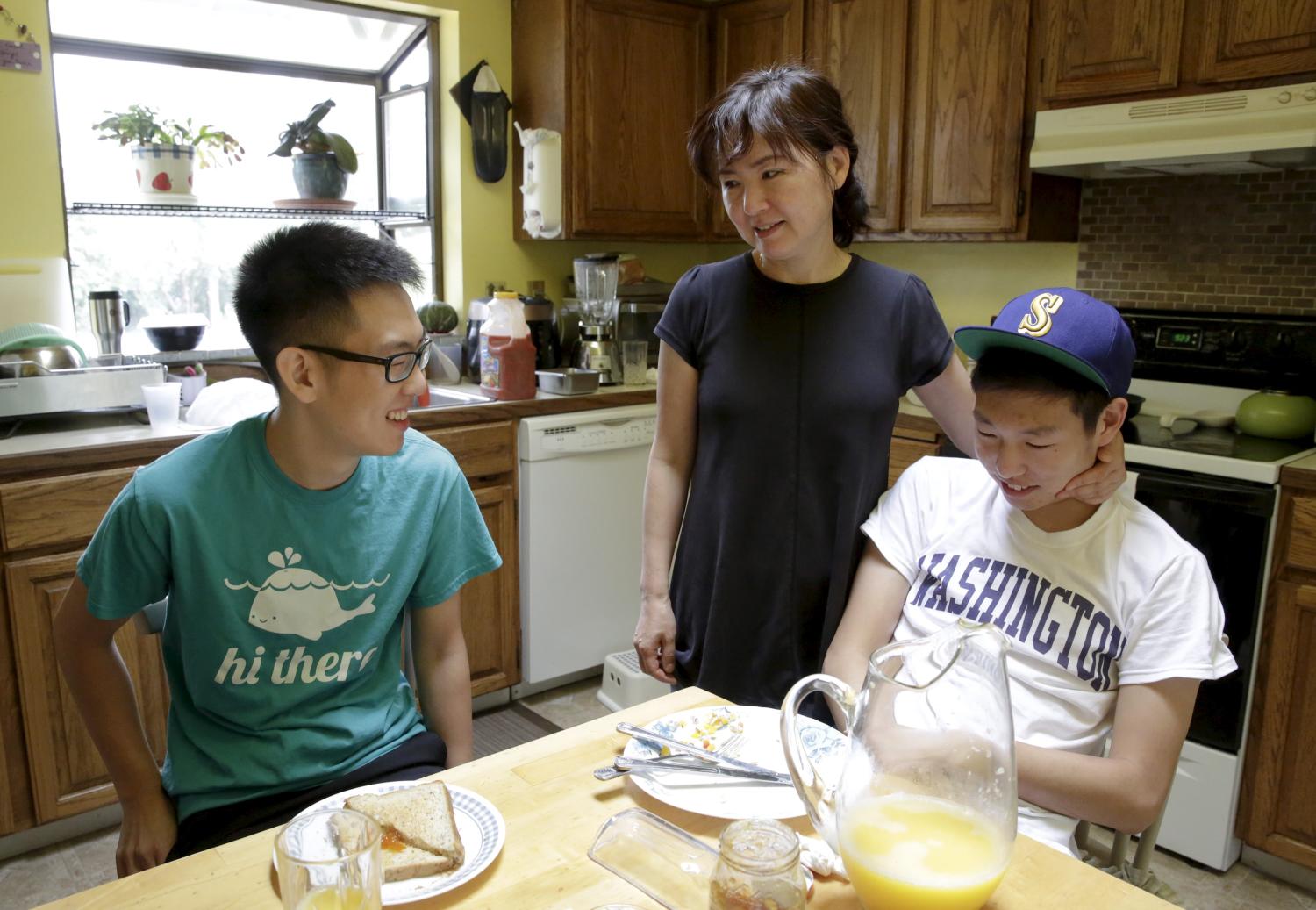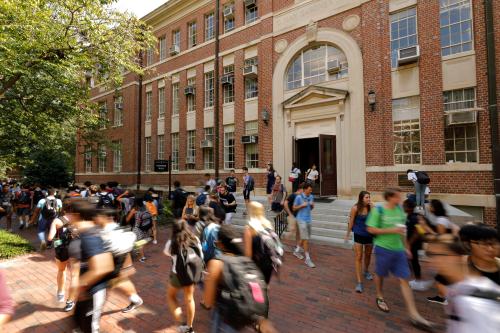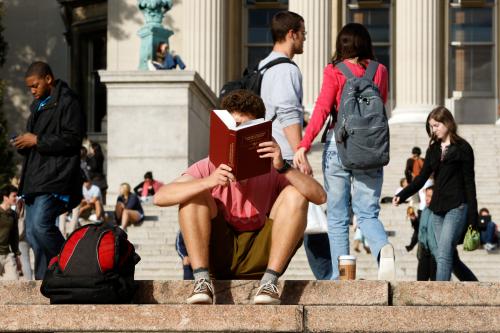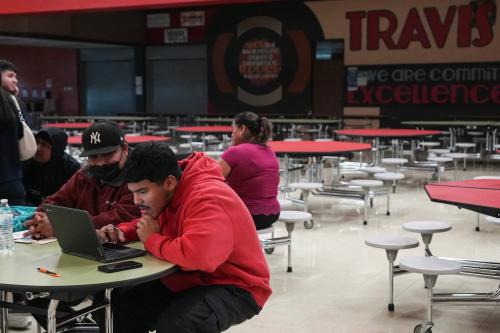Federal policies aimed at preventing poor student borrowing outcomes tend to focus primarily on undergraduate students. In a previous post, we described troubling trends in graduate student lending. In this report, we highlight worrisome trends among parents who borrow to support their children through federal Parent PLUS loans.
The Parent Plus program was launched in 1980 with limits on what parents could borrow. Those caps were subsequently lifted by Congress. Since 1993, parents have been eligible to borrow up to the cost of attendance1 (minus aid received by the student) to finance the cost of an undergraduate’s education. The elimination of borrowing caps combined with tuition increases, changes in the institutions and programs students attend, and regulatory changes have led to increased loan burdens and worsening repayment outcomes for parents. Today at least 3.4 million Parent PLUS borrowers owe $87 billion (not including any consolidated loans2). That’s about 6 percent of all outstanding federal student loans. Parent loans issued today are charged a 4.248 percent origination fee and an interest rate of 7.6 percent.
Because parent borrowers are generally ineligible for many of the borrower protections and income-based loan plans available to student borrowers, the consequences of rising debts and declining ability to pay can be severe, especially when borrowers default. In those cases, federal authorities are required to garnish wages and Social Security benefits and confiscate tax refunds—a particular burden on low- and middle-income families. (In 2017, the Treasury offset $2.8 billion, mostly in tax refunds, for delinquent student-loan debtors including both students and parents.) While defaults are rare among parents overall, they are relatively common for loans taken to pay tuition at certain institutions and among low-income borrowers with weak credit. More generally, many trends in parent borrowing mirror changes in the patterns of undergraduate borrowers. For instance:
- The average annual borrowing amount for parent borrowers has more than tripled over the last 25 years, from $5,200 per year in 1990 (adjusted for inflation) to $16,100 in 2014. And because of these increasing borrowing amounts, more parents owe very large balances: 8.8 percent of parent borrowers entering repayment on their last loan in 2014 owed more $100,000, compared to just 0.4 percent in 2000 (Looney and Yannelis 2018).
- Parent default rates have increased and repayment rates have slowed.3 This is largely because parents borrow more and the types of institutions that students attend. In particular, repayment rates have declined with increases in borrowing at for-profit institutions and at minority-serving institutions.
- Parent borrowers’ repayment outcomes vary widely across institutions that students attend, and repayment rates at the worst-performing ten percent of institutions are alarmingly slow.
Below, we discuss trends in parent borrowing, their implications, and their potential causes in more detail.
What we know about parent borrowers and repayment
Parents may borrow using PLUS loans for costs that are not met by other financial aid (like grants or loans taken out by their children). Borrowers face a very basic credit check to establish eligibility, but the credit standard is low. For instance, a parent who is already delinquent on up to $2,085 in debt is still eligible. Unlike subsidized student loans, parent loans begin accruing interest immediately upon issue of the loan and monthly payments begin. However, payments on the loan may be deferred (with interest) while their children are in school. In practice, many parents appear to choose deferral, often for long durations, leading to rising balances. Nevertheless, parents, on average, tend to have relatively low default rates: between 1999 and 2009 the average 5-year default rates of parent borrowers whose period of in-school deferral ended was 8 percent (Treasury tabulations of NSLDS, Table 15).
But this is changing. Balances have increased, especially after parent PLUS annual and lifetime limits were eliminated in 1993 (Loans are now limited by the cost of attendance rather than a statutory threshold). Regulations issued in 2014 expanded the eligibility for parent loans to borrowers with weaker credit ratings, increasing the number of new borrowers (who had previously been deemed to have an adverse credit history) by 370,000 per year. And legislative policy has tended to expanded the types of institutions and programs that are eligible to take Title IV funds. For instance, legislation in the late 1990s eliminated the 50 percent distance learning limit, and changed the 85/15 rule to 90/104. These policies have ultimately led to the expansion of lower-quality programs that where students and parents have struggled with their loans.
1. The amounts parents borrow are rising rapidly, far above historical norms.
Annual borrowing amounts have more than tripled over the last 25 years: in 1990 the average parent borrower took-out about $5,200 per year (adjusted for inflation); in 2014 it was $16,100. For comparison, the average undergraduate taking out new loans borrowed about $7,300 in 2014.
But parents rarely borrow for only one year. Over the course of a child’s educational experience, a parent may take multiple loans or take out loans for multiple children. As a result, cumulative balances have increased even faster. Currently, the average Parent Plus balance is about $25,600—but it ‘s rising. The chart below shows that a typical parent borrower whose last loan entered repayment in 1990 had about $6,200 in debt. In 2014, parents had about $38,800 in debt. This increase is widespread but is especially sharp for parents supporting students at private non-profit colleges. Due to increased borrowing amounts, more parents owe very large balances. Looney and Yannelis (2018) find that 8.8 percent of parent borrowers entering repayment on their last loan in 2014 owed more $100,000, compared to just 0.4 percent in 2000.
2. Repayment outcomes of parent borrowers are getting worse, and this is driven by increasing default rates across the board and increases in the number of parents borrowing at for-profit institutions.
The Department of Education does not regularly provide standardized, routine indicators of parent borrower outcomes, and thus there is no official source that tracks them.5 But our estimates suggest that parent outcomes appear to be getting worse: the 5-year default rate was about 7 percent in 2000, but about 11 percent in 2009. Repayment rates have also fallen drastically. Parent borrowers entering repayment in 2000 had repaid about 56 percent of their loan balance after 5 years, compared to only 36 percent in 2009 (Treasury tabulations of NSLDS, Table 15).
Borrower outcomes at for-profit institutions stand out for being worse than average, in general, and for their deterioration over time. In 1999 cohort of parent borrowers, the 5-year default rate among for-profit parents was 11.5 percent; for the 2009 cohort, it was 16.3 percent. At private and public institutions, default rates averaged about 6 percent over this period (Treasury tabulations of NSLDS, Table 15).
2. Repayment outcomes of parent borrowers are getting worse, and this is driven by increasing default rates across the board and increases in the number of parents borrowing at for-profit institutions.
The Department of Education does not regularly provide standardized, routine indicators of parent borrower outcomes, and thus there is no official source that tracks them.6 But our estimates suggest that parent outcomes appear to be getting worse: the 5-year default rate was about 7 percent in 2000, but about 11 percent in 2009. Repayment rates have also fallen drastically. Parent borrowers entering repayment in 2000 had repaid about 56 percent of their loan balance after 5 years, compared to only 36 percent in 2009 (Treasury tabulations of NSLDS, Table 15).
Borrower outcomes at for-profit institutions stand out for being worse than average, in general, and for their deterioration over time. In 1999 cohort of parent borrowers, the 5-year default rate among for-profit parents was 11.5 percent; for the 2009 cohort, it was 16.3 percent. At private and public institutions, default rates averaged about 6 percent over this period (Treasury tabulations of NSLDS, Table 15).
Repayment rates have also slowed. The 1999 cohort of for-profit parents had repaid 57.7 percent of their aggregate loan balances after 5 years, which was actually on par or better than parents supporting students at public (57.6 percent) and private (51.9 percent) institutions. But for the 2009 cohort, for-profit parents had only paid back 26.3 percent after 5 years. In contrast, parents supporting students at public and private non-profit institutions repaid about 38 percent of their aggregate loan balances (Treasury tabulations of NSLDS, Table 15).
2. Repayment outcomes of parent borrowers are getting worse, and this is driven by increasing default rates across the board and increases in the number of parents borrowing at for-profit institutions.
The Department of Education does not regularly provide standardized, routine indicators of parent borrower outcomes, and thus there is no official source that tracks them.7 But our estimates suggest that parent outcomes appear to be getting worse: the 5-year default rate was about 7 percent in 2000, but about 11 percent in 2009. Repayment rates have also fallen drastically. Parent borrowers entering repayment in 2000 had repaid about 56 percent of their loan balance after 5 years, compared to only 36 percent in 2009 (Treasury tabulations of NSLDS, Table 15).
Borrower outcomes at for-profit institutions stand out for being worse than average, in general, and for their deterioration over time. In 1999 cohort of parent borrowers, the 5-year default rate among for-profit parents was 11.5 percent; for the 2009 cohort, it was 16.3 percent. At private and public institutions, default rates averaged about 6 percent over this period (Treasury tabulations of NSLDS, Table 15).
Repayment rates have also slowed. The 1999 cohort of for-profit parents had repaid 57.7 percent of their aggregate loan balances after 5 years, which was actually on par or better than parents supporting students at public (57.6 percent) and private (51.9 percent) institutions. But for the 2009 cohort, for-profit parents had only paid back 26.3 percent after 5 years. In contrast, parents supporting students at public and private non-profit institutions repaid about 38 percent of their aggregate loan balances (Treasury tabulations of NSLDS, Table 15).
3. Parent repayment outcomes vary widely across institutions that student attends, and repayment rates are alarmingly low at schools ranked in the bottom 10 percent of repayment.
Trends in borrowing and outcomes at aggregated levels mask the differences among institutions. The chart below shows the average five-year repayment rate for borrowers entering repayment in 2009 by institution repayment decile among undergraduate and parent borrowers (Chou, Looney, and Watson 2017). Parents supporting students attending institutions at the fifth decile, for instance, had paid about 18 percent of their aggregate loan balance after five years. As the chart shows, repayment outcomes vary widely among undergraduate and parent borrowers. Compared to undergraduate borrowers, repayment rates for parents are lower, largely because parents often defer payments while the student is in school even though interest begins accruing immediately and at relatively high rates, which means that balances rise for some borrowers.
2. Repayment outcomes of parent borrowers are getting worse, and this is driven by increasing default rates across the board and increases in the number of parents borrowing at for-profit institutions.
The Department of Education does not regularly provide standardized, routine indicators of parent borrower outcomes, and thus there is no official source that tracks them.8 But our estimates suggest that parent outcomes appear to be getting worse: the 5-year default rate was about 7 percent in 2000, but about 11 percent in 2009. Repayment rates have also fallen drastically. Parent borrowers entering repayment in 2000 had repaid about 56 percent of their loan balance after 5 years, compared to only 36 percent in 2009 (Treasury tabulations of NSLDS, Table 15).
Borrower outcomes at for-profit institutions stand out for being worse than average, in general, and for their deterioration over time. In 1999 cohort of parent borrowers, the 5-year default rate among for-profit parents was 11.5 percent; for the 2009 cohort, it was 16.3 percent. At private and public institutions, default rates averaged about 6 percent over this period (Treasury tabulations of NSLDS, Table 15).
Repayment rates have also slowed. The 1999 cohort of for-profit parents had repaid 57.7 percent of their aggregate loan balances after 5 years, which was actually on par or better than parents supporting students at public (57.6 percent) and private (51.9 percent) institutions. But for the 2009 cohort, for-profit parents had only paid back 26.3 percent after 5 years. In contrast, parents supporting students at public and private non-profit institutions repaid about 38 percent of their aggregate loan balances (Treasury tabulations of NSLDS, Table 15).
3. Parent repayment outcomes vary widely across institutions that student attends, and repayment rates are alarmingly low at schools ranked in the bottom 10 percent of repayment.
Trends in borrowing and outcomes at aggregated levels mask the differences among institutions. The chart below shows the average five-year repayment rate for borrowers entering repayment in 2009 by institution repayment decile among undergraduate and parent borrowers (Chou, Looney, and Watson 2017). Parents supporting students attending institutions at the fifth decile, for instance, had paid about 18 percent of their aggregate loan balance after five years. As the chart shows, repayment outcomes vary widely among undergraduate and parent borrowers. Compared to undergraduate borrowers, repayment rates for parents are lower, largely because parents often defer payments while the student is in school even though interest begins accruing immediately and at relatively high rates, which means that balances rise for some borrowers.
Indeed, borrowers at schools ranked in the bottom decile for repayment rates shows that parent borrowers have significantly worse repayment rates than undergraduate borrowers in the same decile. After five years, these parents’ aggregate loan balance had actually increased by a whopping 32 percent. Parents in the second decile do not fare well either: their aggregate loan balance increased by 1 percent after five years.
When we examine the institutions in that bottom decile, we observe two major factors in play. First, the majority of institutions with the worst parent repayment rates are for-profit institutions, including many institutions that have been fined or shut-down for fraudulent practices. Indeed, the for-profit institutions with the absolute worst parent repayment rates are usually institutions accused or convicted of fraudulent and deceptive practices. These include ITT Tech, Mackie Brown College and Art Institute campuses, Westwood College, the International Academy of Design and Technology, and Everest University.9 The deceptive practices that misled students to enroll and take-out loans likely contributed to the poor repayment outcomes of parent borrowers at these institutions.
2. Repayment outcomes of parent borrowers are getting worse, and this is driven by increasing default rates across the board and increases in the number of parents borrowing at for-profit institutions.
The Department of Education does not regularly provide standardized, routine indicators of parent borrower outcomes, and thus there is no official source that tracks them.10 But our estimates suggest that parent outcomes appear to be getting worse: the 5-year default rate was about 7 percent in 2000, but about 11 percent in 2009. Repayment rates have also fallen drastically. Parent borrowers entering repayment in 2000 had repaid about 56 percent of their loan balance after 5 years, compared to only 36 percent in 2009 (Treasury tabulations of NSLDS, Table 15).
Borrower outcomes at for-profit institutions stand out for being worse than average, in general, and for their deterioration over time. In 1999 cohort of parent borrowers, the 5-year default rate among for-profit parents was 11.5 percent; for the 2009 cohort, it was 16.3 percent. At private and public institutions, default rates averaged about 6 percent over this period (Treasury tabulations of NSLDS, Table 15).
Repayment rates have also slowed. The 1999 cohort of for-profit parents had repaid 57.7 percent of their aggregate loan balances after 5 years, which was actually on par or better than parents supporting students at public (57.6 percent) and private (51.9 percent) institutions. But for the 2009 cohort, for-profit parents had only paid back 26.3 percent after 5 years. In contrast, parents supporting students at public and private non-profit institutions repaid about 38 percent of their aggregate loan balances (Treasury tabulations of NSLDS, Table 15).
3. Parent repayment outcomes vary widely across institutions that student attends, and repayment rates are alarmingly low at schools ranked in the bottom 10 percent of repayment.
Trends in borrowing and outcomes at aggregated levels mask the differences among institutions. The chart below shows the average five-year repayment rate for borrowers entering repayment in 2009 by institution repayment decile among undergraduate and parent borrowers (Chou, Looney, and Watson 2017). Parents supporting students attending institutions at the fifth decile, for instance, had paid about 18 percent of their aggregate loan balance after five years. As the chart shows, repayment outcomes vary widely among undergraduate and parent borrowers. Compared to undergraduate borrowers, repayment rates for parents are lower, largely because parents often defer payments while the student is in school even though interest begins accruing immediately and at relatively high rates, which means that balances rise for some borrowers.
Indeed, borrowers at schools ranked in the bottom decile for repayment rates shows that parent borrowers have significantly worse repayment rates than undergraduate borrowers in the same decile. After five years, these parents’ aggregate loan balance had actually increased by a whopping 32 percent. Parents in the second decile do not fare well either: their aggregate loan balance increased by 1 percent after five years.
When we examine the institutions in that bottom decile, we observe two major factors in play. First, the majority of institutions with the worst parent repayment rates are for-profit institutions, including many institutions that have been fined or shut-down for fraudulent practices. Indeed, the for-profit institutions with the absolute worst parent repayment rates are usually institutions accused or convicted of fraudulent and deceptive practices. These include ITT Tech, Mackie Brown College and Art Institute campuses, Westwood College, the International Academy of Design and Technology, and Everest University.11 The deceptive practices that misled students to enroll and take-out loans likely contributed to the poor repayment outcomes of parent borrowers at these institutions.
However, almost half of institutions with the worst parent repayment rates are public or private non-profit institutions. The second contributor to these poor outcomes at the bottom decile is that most of the public and private non-profits in this decile are attended by a greater share of underrepresented minorities. Of particular importance is debt burdens for parents whose students attend Historically Black Colleges and Universities (HBCUs). Of the 49 HBCUs in our sample, only two institutions (the two campuses of Lincoln University) were not in the bottom repayment decile. HBCUs and Hispanic-Serving Institutions (HSIs) make-up 26 percent of the institutions in the bottom parent repayment decile.12
Debt burdens for parents at HBCUs and HSIs have also increased. For example, parent borrowers at Clark Atlanta University took out $10.7 million of loans in 2009, but by 2014 the balance on those loans had ballooned to $16.8 million. At Howard, parents had borrowed $25.1 million in 2009 and owed $29.3 million by 2014. But in contrast to the for-profit institutions with deceptive practices, these HBCUs and HSIs are nationally-respected colleges and universities that are fulfilling a vital need by providing educational opportunities to underrepresented minorities. It is unfortunate that access to these institutions are attached to such large debt burdens on their students and their parents.
This is important because it means that some institutions systematically lead parent borrowers into loans that they are unable to make progress paying off.
Addressing the unintended consequences of the current system
In all, these trends have important implications. From the borrower’s perspective, there is heightened economic distress. Many parents supporting college students are saddled with large debt burdens, ultimately repaying just enough to avoid default and sometimes owing significantly more than their initial balance. Further, expanded eligibility for credit and higher loan limits distort educational offerings, encouraging schools to offer programs that they would not otherwise have and/or charge higher tuition.
To some extent, these changes are the result of rising tuition and an increased willingness to finance education using debt. But these changes are also a consequence of federal policies that expanded credit, like the elimination of the Parent PLUS annual and lifetime limits and changes in credit qualifications. This has directly increased the amounts that parents can borrow, who can borrow, and which institutions they can send their children to with borrowed money. Moreover, these changes occurred in the absence of a federal system of accountability relevant for parent borrowers, like that which applies to undergraduates (e.g. rules sanctioning institutions when their undergraduate borrowers default at high rates).
Hence, the expansions in credit availability did not involve the same guardrails that apply to most other student loans. The expansion of parent PLUS loans replaced private sector loans (where lenders scrutinized borrowers’ ability to repay), and thereby expanded credit to institutions and programs that would not have been financed by the private sector.
When forming student loan policies, policymakers must balance providing fair access to higher education while minimizing costs to borrowers and taxpayers and unintended consequences of easy credit. Reigning in student loan credit, however, need not limit access to high-quality programs. For instance, a variety of outcome-oriented accountability systems could better direct credit to students, programs, and institutions where students are more likely to succeed. And some high-risk borrowers might be better served with grants or progressive repayment programs than today’s mostly one-size fits all approach.
Support for this publication was generously provided by the Laura and John Arnold Foundation.
Brookings is committed to quality, independence, and impact in all of its work. Activities supported by its donors reflect this commitment and the analysis and recommendations are solely determined by the scholar.
-
Footnotes
- Includes tuition and fees, books and supplies, room and board, transportation, and personal expenses.
- Consolidated loans occur when multiple federal student loans are refinanced and combined into one new loan, so that there is a single monthly payment instead of multiple payments.
- The default rate is the fraction of borrowers who leave school and are required to begin payment of their loans, but who default within a specified number of years.
- The distance learning limit required that no more than 50 percent of a school’s regular students may be enrolled in online programs. The 90/10 rule caps the percentage of revenue that a school can receive from federal financial aid sources to 90 percent.
- The Department of Education in 2014 produced estimates of Parent Plus default rates for 2006-2010 which show a similar pattern.
- The Department of Education in 2014 produced estimates of Parent Plus default rates for 2006-2010 which show a similar pattern.
- The Department of Education in 2014 produced estimates of Parent Plus default rates for 2006-2010 which show a similar pattern.
- The Department of Education in 2014 produced estimates of Parent Plus default rates for 2006-2010 which show a similar pattern.
- ITT Tech declared bankruptcy in 2016 after Department of Education sanctions. Mackie Brown College and the Art Institute are both are owned and operated by EDMC, which was fined almost $100m for illegally paying recruiters to sign up student borrowers. Westwood College closed after allegations of misleading advertising and enrollment practices. The International Academy of Design and Technology is owned and operated by Career Education Corporation, which was under investigation by more than a dozen states Attorneys General and where almost half of the schools programs would have failed the Department of Education’s Gainful Employment standards in 2015. It was shuttered in 2015. Everest was operated by Corinthian Colleges until Corinthian was fined and sanctioned for deceptive practices and later closed.
- The Department of Education in 2014 produced estimates of Parent Plus default rates for 2006-2010 which show a similar pattern.
- ITT Tech declared bankruptcy in 2016 after Department of Education sanctions. Mackie Brown College and the Art Institute are both are owned and operated by EDMC, which was fined almost $100m for illegally paying recruiters to sign up student borrowers. Westwood College closed after allegations of misleading advertising and enrollment practices. The International Academy of Design and Technology is owned and operated by Career Education Corporation, which was under investigation by more than a dozen states Attorneys General and where almost half of the schools programs would have failed the Department of Education’s Gainful Employment standards in 2015. It was shuttered in 2015. Everest was operated by Corinthian Colleges until Corinthian was fined and sanctioned for deceptive practices and later closed.
- HSIs are institutions that have full-time undergraduate enrollment of at least 25 percent Hispanic students.






